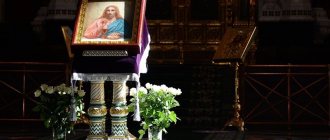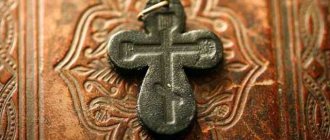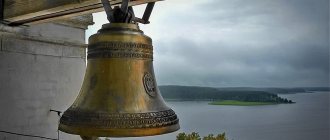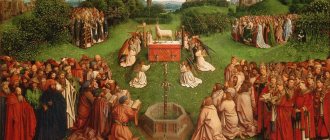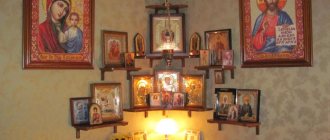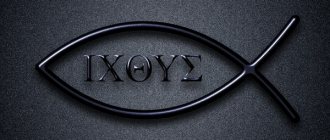An icon case is not just a decoration for an icon. It has an ancient history and carries a semantic and functional load. Even in ancient times, representatives of different religions used icon cases to store all kinds of relics and scrolls. They protected objects from dust and moisture, thereby extending their life. Today, an icon case is a frame of icons that can be seen in a church temple. A special atmosphere is created inside it, which prevents any negative impact of the environment on the sacred image. In addition, one look at such a handmade masterpiece as an icon case awakens respect not only for religion, but also for the skillful hands of man, his ingenuity, skill, imagination and spirituality.
Types of icon cases
The icon case can be wall-mounted or floor-mounted. It depends on where exactly the icon is located. As a rule, in most churches you can see portable icon cases or, as they are also called, cabinets in the form of pencil cases or boxes, which are designed to store holiday icons on the central lectern. They can be completely closed or open.
Often, in addition to framing, glass is used. This icon case is intended for especially valuable images. An icon case can be quite simple, without glass or any decorations. But in churches, as a rule, there are beautiful icon cases, richly decorated with carvings. The style of the temple, the expediency of decorating a specific sacred image, as well as its location determine how the icon cabinet will be decorated.
A little history
Initially, icon cases were created not to store images of saints, but to store other things. Jews preserved sacred books in them, Christians preserved the relics of saints.
Such storage became most popular during the Middle Ages. At this time, only icons began to be stored in boxes.
Ancient products corresponded to the architecture of the sanctuary in which they were located.
Expert opinion
Sidorenko Alexander
Antiques appraiser, numismatist
Now icon cases are an integral part of the temple, as well as works of art. Anyone can buy a product according to their desires and capabilities.
Well, new technologies have done their job. Now you can purchase the creation not only in churches, but also on the Internet, but the cost will be higher.
What should a proper icon case be like?
To make a high-quality and durable frame for an icon, you need to know several important nuances. The most important thing is the space between the glass and the image, which should remain after the icon is inserted into the icon case. It should be two or three centimeters. To fix the icon inside the icon case, use wooden blocks, corrugated cardboard or thick paper.
The icon case is also the protection of the icon. Therefore, to preserve the holy face for many years, glass is used, not plastic. The latter bends over time, which negatively affects the condition of the image. In addition, harmful bacteria and mold develop under the plastic, which destroys the paint.
What does it look like?
An icon case is a case into which the icon is inserted. Products can be wall-mounted, corner-mounted, or floor-mounted. Icons are designed to preserve images of saints from the destructive effects of environmental factors: temperature changes, light radiation, dust, dirt, bacteria. And also inside the icon case a favorable microclimate is created for the image. Therefore, you cannot call it just a box.
Kyoto
Icons for the home most often represent an opening and closing cabinet. Wall products are also homemade.
Important! Under no circumstances should the image come into contact with the glass. Between the two surfaces it is necessary to leave an air space of at least two to three cm. If the image is made on canvas, the distance from it to the glass is at least five mm.
The image is attached using small blocks of wood. Sometimes the sizes may not match. You cannot file down the edges of the icon in order to insert it into the product. The image should be stored in an icon case corresponding to its size. The dowels of the icon should not be allowed to be pressed tightly against the walls of the vault. There should be at least one cm between them.
Contrary to some opinions, the item does not need to be sealed. Ventilation is required. Otherwise, it will be difficult to avoid mold formation.
Important points briefly:
- Ventilation is important for the icon case;
- There is a space of at least two cm between the image and the glass;
- Do not allow the dowels of the icon to come into close contact with the walls of the product;
- It is unacceptable to adjust the size of an icon to place it in storage.
If these simple rules are followed, the image can be preserved for many years.
But increasingly, glass in objects began to be replaced with plastic. However, it must be taken into account that it is not only unable to protect the icon as well, but also leads to its damage. Due to plexiglass, air access becomes much worse. As a result, an excellent environment for the proliferation of bacteria is formed.
What do you need to know to make an icon case at home?
An icon case for an icon can be made at home. It's not as difficult as it seems at first glance. To do this, you need to stock up on wooden boards, carpentry tools, glass and fittings. You also need to purchase stain, varnish and paint. First of all, you need to decide for which icon the icon case will be made, and where it will be installed. The lighting of the location of the icon case should also be taken into account. Based on all this, you need to choose a future color shade to frame the image. You also need to clarify what kind of shrine the shrine will be, floor or tabletop. Another important point is the number of images that will be placed in the icon case.
Icon setting - history of works
It is unknown when the first such frames appeared. Probably their prototypes were prefabricated Byzantine shrines made of relief panels (IX-XI centuries). And the most ancient Russian vestments made of embossed silver are dated to the 12th century. They decorate the images of the apostles Peter and Paul, the Mother of God Hodegetria and the Savior Golden Robes (now these relics are in the St. Sophia Cathedral in Novgorod).
In the XIV century. The first type of frames was formed - basmen, from thin sheets of metal rolled onto a matrix with an ornament. Decorative elements were nailed to the icon, and due to the fact that they covered only part of the image (background or clothing), the frame was called typesetting. It was strict and restrained, setting off the drawing, but not competing with it.
The real flowering of this art occurred in the 17th century. The applied decorations, designed in a lush Baroque style, became solid, revealing only the hands and faces of the saints. When making icons in a silver frame, the master used a solid metal plate on which he carved out figures of the righteous, their attributes, outfits, landscapes and miniature instructive scenes, framing everything with curls, frames and inscriptions.
Salary of the list of the icon of the Vladimir Mother of God
Less often, works were made of gold - for example, Prince Andrei Bogolyubsky (1111-1174) ordered such a vestment for the Vladimir shrine of the Virgin Mary. And the robe of the Don Virgin Mary weighed more than 5 pounds (about 82 kg), and a significant proportion of the total mass was made up of diamonds, emeralds, sapphires, garnets and pearls! In addition, pectoral crosses, holy relics, a piece of the Life-Giving Tree of the Lord, panagias (medallions of bishops) and other relics were attached to the base. Unfortunately, this product has not survived to this day.
In the XIX century. frames become cheaper, their production becomes mass-produced: frames are stamped on machines, and voluminous parts are soldered to the base. Such vestments in the spirit of classicism are distinguished by simplicity of patterns, symmetry, and less relief.
The frames of ancient icons were built up over many centuries. They were supplemented with new votive gifts, individual elements were changed, and decorated in accordance with the tastes of the abbot or patron of the temple. Therefore, each robe is a priceless treasure for both believers and researchers. However, in the twentieth century. Due to wars and revolutions, many unique products were irretrievably lost.
Nowadays, salary is an integral part of any image. Craftsmen are constantly working to create exclusive works. Thus, icons made of amber are extremely popular - their warm glow instills peace and tranquility in the soul.
The first stage of making the icon case
To make an icon case with your own hands, you need to measure the dimensions of the icon. Next, you need to properly design the icon case: make a drawing and put down the dimensions. After this, you can start drawing a sketch of the decorative elements. The best wood for making a shrine is considered to be pine or linden. You can use pine for the frame of the icon case, and linden for decorative carving elements. A home icon case can be made from birch, ash or fruit tree wood.
There should be an air gap between the icon itself and the glass door, which is equal to the sum of the thickness of the icon board and the protruding part of the dowels. The main thing is that this value is at least two centimeters. The keys should not rest against the walls of the icon case. A gap of one centimeter is usually left between the edge of the dowel and the wall of the shrine.
What does the vestment symbolize?
The bliss that reigns in the Heavenly Kingdom cannot be reproduced in the material world. But people wanted to display at least a particle of splendor, and the most accessible means for this were precious metals and stones - their radiance embodied the greatness of the Creator, and their durability reminded that the power of the Lord is eternal.
This tradition also has a theological basis. For example, God commanded that the Ark of the Covenant be overlaid with “pure gold, inside and out” (Ex. 25:11), and St. Gregory of Nyssa argued that divine beauty is “in the charm of the external image, clothed in purple, in order to determine its internal dignity.” However, it is important not to fall into the sin of idolatry, remembering that even the richest decoration is only a shadow of an ideal inaccessible to man.
Gradually, a whole set of symbols arose that made it possible to give the robe a special meaning. Here are some common allegories:
- the golden frame of the icon is the personification of the Lord’s generosity and mercy;
- silver is a sign of purity of thoughts, deliverance from sins and salvation of the soul;
- multi-colored enamel - Christian virtues (humility, kindness, love for neighbors);
- rubies are the embodiment of the Resurrection (victory of eternal life over death), but at the same time - a reminder of the blood and torment of Jesus Christ;
- emeralds are stones of the Holy Spirit, symbolizing hope and renewal;
- sapphires and pearls are attributes of the Virgin Mary, embodying Her meekness, purity and perfection;
- amber was associated with holiness - an unquenchable light that illuminated the Lord's saints. Contemplating radiant gems, a person cleansed himself from everyday vanity and approached Heaven.
Icon “Apostles Peter and Paul” from the 11th century. (236.0 x 147.0 cm) Novgorod State United Museum-Reserve
Second phase
When making a decoration such as an icon case with your own hands, it is necessary to take into account the bending of the warped board from which the image is made. In the inner frame of the wooden shrine, a figured cutout should be made for this bend. The margin should be up to two centimeters. Next, you need to glue a velvet strip inside the wooden cabinet. After all, the holy face should not come into contact with the icon case. Otherwise, the icon board may jam.
After these manipulations, it is necessary to fix the icon in the icon case. This is done using small wooden blocks or thick cardboard inserts. At this stage you can insert the glass. The next step is to cover the icon case with stain, and then with a layer of varnish or paint. Ready. The fittings can be installed. We should not forget that the icon case is not only a decoration for the icon. He protects the holy image, which must be treated with due respect. By making an icon case, you can protect an icon that is valuable not only materially, but also spiritually, from the adverse effects of the environment.
How to make an icon case with your own hands
Making a frame for an icon yourself may seem like a complicated process, but this work can be done by many, even novice craftsmen or amateurs. Manufacturing technology, shape and design features depend on the size of the image and the chosen type of future casket. First of all, you need to measure the icon. In order not to constantly clarify the dimensions, you can make a simple drawing and navigate according to it.
Required tools and materials
Before you start, you need to prepare some tools. You will need:
- small hacksaw for wood;
- miter box;
- clamp;
- iron ruler-corner;
- universal screwdriver;
- pliers and side cutters;
- sandpaper and holder for it;
- electric drill with drills;
- hammer;
- knife with spare blades;
- sealant gun;
- soft spatula;
- brushes for varnishing the finished product.
To ensure that the casket lasts a long time, it is better to choose glass instead of plastic as the front door.
Author's advice
To make a casket you need the following materials:
- wooden frame (baguette);
- slats for the sides of the casket;
- plywood, hardboard, board for the back wall;
- nails, screws, hinges and fasteners for the door;
- cord for the backing between the body and the door;
- glue;
- wood putty;
- sealant;
- glass;
- finishing agent (varnish, stain).
You can make frames for icons yourself
Making the inner frame
Works like a picture frame. It is necessary to cut the profile bars at an angle of 45° to the size of the image and glue them together. The thicker the icon, the thicker the bars should be. If the image is made on canvas and does not have a stretcher, you can stretch it onto a sheet of plywood no thicker than 6 mm.
Making the outer frame
It is important to estimate the required dimensions in advance, since the width of the frame is the depth of the casket. To install the glass you need to provide a groove. To do this, facade bars of size and thickness are glued to the edges of the icon case planks. The inner frame should be located inside the outer frame. Before gluing the corners of the planks, you need to saw them at an angle of 45°.
After the glue has dried, you need to make 2 cuts in each corner and glue flat tenons into them. This will ensure the durability of the product. Experienced craftsmen do not recommend using screws, nails and metal corners for this purpose. The excess glued tenons are cut off and the frame is sanded with sandpaper. Next, the back wall is made to size.
General work
Both frames are tinted and varnished. Next, all the prepared parts are assembled. The glass, cut to fit the body, is fixed with silicone. The icon is placed in an internal frame placed inside the casket. The back wall is closed from the outside and secured with a stapler. To place the icon case on the wall, you need to equip it with a canopy.
Holy icons are placed in icon cases - wooden glass caskets that protect the images. They can be simple or with elaborate carvings and decorations. If desired, you can make the icon case yourself.
If you find an error, please select a piece of text and press Ctrl+Enter.
The ark.
The Ark is a recess on the front side of the icon, forming a flat surface. In ancient times, the ark served as a functional part when covering the icon board with gesso. Also, artistically, the ark creates the effect of a window from another world.
Currently, icons are made both with and without the ark. At the same time, there are options when the husk (the edge separating the surface of the board from the surface of the ark is covered with gold.
| Icon with a rectangular ark | Icon with an arched ark | Icon with an ark and a gilded husk |
Icon – an absolutely isolated object of our everyday environment. The attitude towards them is completely different from the contemplation of everything that surrounds us. An icon is a window for communication with God, a higher power. This has no value, does not cost a penny - and at the same time it is worth more than all the treasures of the world. It is impossible to count with money what is in our souls, that we trust only the one who stands above us all.
And at the same time, an icon is an object of art, created, after all, by man. Having finally taken their rightful place in our lives, in our souls, they return to their places in the home, which they had previously occupied for centuries. Whether it is a typographical work, or an ancient, prayed masterpiece of monastic writing taken out of a chest, the essence of the icon is unchanged - it is an object not only of worship, but also of admiration, and, if it is completely utilitarian, decoration of one’s surroundings, one’s home.
Since ancient times, icons have been decorated with all possible means and methods. Believers did not spare gold and silver for the expensive “robes” of icons; they dressed them in pearls, precious stones, and covered the frames with intricate carvings. Even in difficult periods, when faith was being eradicated from the people by all means, when there was no “gold and silver”, still, even in the poorest families, there were clippings from magazines, cheap icons that were inserted into homemade frames with foil frames and paper flowers.
Times change, and they dictate to us a different attitude towards different things. Let’s say that making an embroidered icon is available to almost every woman, and anyone can buy an icon in a subway passage, or order a master, for example, a measured icon, which is made to the height of a newborn child, as a talisman and relic for the rest of his life. Now there is no need to plan boards to make a frame, but you can order a full-fledged design of the icon - with a frame and an icon case - within the limits of your capabilities and needs.
We design icons constantly - from the first days of work, almost every day a number of images are being decorated in the workshop. For each icon, according to the customer’s wishes, a frame, an icon case, or just a frame is made. Our team equally respects these things as objects of the highest, emotional value. Moreover, we are not necessarily talking about Christian spiritual values - we work with respect both with Hindu religious objects (for example, images of Krishna) and Muslim objects of worship (embroidered suras of the Koran) - we do not make distinctions both in a professional sense and in a spiritual sense. We will find a decent design for everything, and guarantee due respect when placing and fulfilling an order.
Gilding.
For gilding, gold leaf is used - very thin leaves of gold applied to paper sheets. During gilding, this gold is transferred to the surface using a special technology.
Gold plating of an icon can be in different forms: full gilding (both background and frames), gilding of the background, gilding of the halo, gilding of individual parts: clothing, elements of the landscape (drawing), background, fields.
The same gold can look different. This brilliant effect is created by polishing gold, as well as glossy varnishes. To reduce the shine effect, matte varnish is used. To give the gold a more yellow color, several layers of varnish are applied. The color of gold is also influenced by the special base on which it is applied.
Gold can also be given a mirror effect (strong reflection), for this it is polished in a special way.
Gold blackening is used to decorate gold surfaces.
| Full gold background, matte gold color | Gilding of fields and arches | Gilding the outside of the icon arch | Gilding of the halo and husk | Full background and some details of clothes with blackening on gold | full gilding of the background and some details of clothing with blackening on gold | Gilding on the face with polishing (mirror effect). |
Carving on gesso.
A special type of carving made on gesso (multi-layered primer applied to the board before painting the image of the icon). This carving creates a three-dimensional relief.
| Carving on gesso and painting under enamel | Carving on gesso (in the margins) and painting under enamel | Carving on gesso on the margins and halo | Carving on gesso on the margins and halo (on the left is a view of the board before painting the image). |


